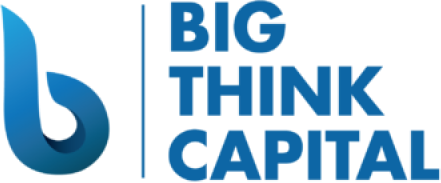How to Navigate Rising Inflation and Price Increases: A Small Business Guide to Secure Financing and Enhance Cash Flow
Estimated reading time: 7 minutes
- Stay informed and adaptable: Monitor economic trends and adjust your business strategies accordingly.
- Diversify suppliers: Establish relationships with multiple suppliers to secure better rates.
- Understand your financing options: Familiarize yourself with financing products to act quickly when needed.
Table of Contents
- Understanding Inflation and Its Impact
- Strategies for Small Businesses to Adapt
- Securing Financing Amid Rising Inflation
- Three Practical Takeaways for Business Owners
- Conclusion
- FAQ
Understanding Inflation and Its Impact
Inflation is the rate at which the general level of prices for goods and services rises, eroding purchasing power. According to the U.S. Bureau of Labor Statistics, the Consumer Price Index (CPI) has shown consistent increases, suggesting that small business owners must adapt to a changing economic landscape.
Here are some key inflation indicators from recent months:
- Consumer Price Index (CPI): The CPI has reached levels not seen in decades, with increases hovering around 7-8% year-over-year.
- Producer Price Index (PPI): This index, which measures wholesale prices, has also demonstrated significant upward trends, indicating future consumer price increases.
These statistics reflect the urgent need for small businesses to reevaluate their pricing strategies, cost structures, and financing options in response to inflationary pressures.
Strategies for Small Businesses to Adapt
- Review Your Pricing Strategy
- Ensure that your product or service prices reflect the current market conditions and cost of inputs. Adjust prices gradually rather than all at once to avoid shocking loyal customers.
- Consider implementing tiered pricing or offering discounts for bulk purchases to encourage sales while adapting to higher costs.
- Enhance Operational Efficiency
- Streamline processes to reduce waste and minimize costs. Investing in technology and automation can lead to cost savings over time.
- Review supplier contracts and negotiate better terms to manage raw material costs effectively.
- Develop a Cash Flow Management Plan
- Maintain a close watch on accounts receivable and accounts payable. Encourage customers to pay invoices promptly while delaying unnecessary expenses.
- Implement a budget that allows for flexibility in the face of rising costs.
Securing Financing Amid Rising Inflation
With inflation affecting profit margins, small businesses often require additional funding to sustain operations. Here are financing options to consider:
- Working Capital Advances
These are short-term loans designed to provide immediate cash flow for operational expenses. They can help bridge gaps during times of increased expenditures. Big Think Capital offers quick access to working capital advances, allowing businesses to focus on growth rather than financial strain.
- SBA Loans
The Small Business Administration (SBA) provides guaranteed loans that deliver lower interest rates and longer repayment terms. These loans can be beneficial for businesses looking to invest in long-term growth, even in an inflationary environment.
- Equipment Financing
This option is excellent for businesses that need to purchase or lease new equipment. Equipment financing allows you to spread the cost of new machinery over its useful life, freeing up cash for other operational needs.
- Merchant Cash Advances (MCA)
An MCA offers businesses quick funding in exchange for a percentage of your daily credit card sales. This can be an effective solution for businesses with immediate cash flow needs, especially during inflationary periods when sales may fluctuate.
- Lines of Credit
This funding option allows businesses to draw funds as needed, providing flexibility and control over cash flow. With a line of credit, you can access funds for unexpected expenses or operational costs while paying interest only on the amount borrowed.
Three Practical Takeaways for Business Owners
- Stay Informed and Adaptable: Monitor economic trends and adjust your business strategies accordingly.
- Diversify Suppliers: Relying on a single supplier can expose your business to price shocks. Establish relationships with multiple suppliers to secure better rates.
- Understand Your Financing Options: Familiarize yourself with your financing options before crises arise.
Conclusion
Navigating rising inflation and price increases requires strategic planning and proactive measures. By enhancing operational efficiency, adjusting pricing strategies, and considering various financing options, small business owners can weather these economic challenges.
At Big Think Capital, we understand the unique financial needs of small businesses in today’s economy. Our range of funding solutions, including working capital advances, SBA loans, equipment financing, and more, can help you secure the necessary resources to maintain and grow your business during uncertain times.
Don’t wait until inflation impacts your operations. Learn more about how we can assist you by visiting bigthinkcapital.com or speaking with one of our funding experts today.
FAQ
What is inflation?
Inflation is the rate at which the general level of prices for goods and services rises, leading to a decrease in purchasing power.
How can small businesses mitigate the effects of rising inflation?
Small businesses can mitigate the effects of rising inflation by adjusting pricing strategies, enhancing operational efficiency, and considering various financing options.
What financing options are available for small businesses facing inflation?
Financing options include working capital advances, SBA loans, equipment financing, merchant cash advances, and lines of credit.






